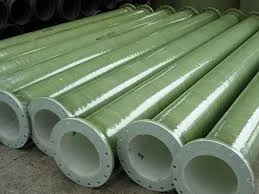
-
 Afrikaans
Afrikaans -
 Albanian
Albanian -
 Amharic
Amharic -
 Arabic
Arabic -
 Armenian
Armenian -
 Azerbaijani
Azerbaijani -
 Basque
Basque -
 Belarusian
Belarusian -
 Bengali
Bengali -
 Bosnian
Bosnian -
 Bulgarian
Bulgarian -
 Catalan
Catalan -
 Cebuano
Cebuano -
 China
China -
 China (Taiwan)
China (Taiwan) -
 Corsican
Corsican -
 Croatian
Croatian -
 Czech
Czech -
 Danish
Danish -
 Dutch
Dutch -
 English
English -
 Esperanto
Esperanto -
 Estonian
Estonian -
 Finnish
Finnish -
 French
French -
 Frisian
Frisian -
 Galician
Galician -
 Georgian
Georgian -
 German
German -
 Greek
Greek -
 Gujarati
Gujarati -
 Haitian Creole
Haitian Creole -
 hausa
hausa -
 hawaiian
hawaiian -
 Hebrew
Hebrew -
 Hindi
Hindi -
 Miao
Miao -
 Hungarian
Hungarian -
 Icelandic
Icelandic -
 igbo
igbo -
 Indonesian
Indonesian -
 irish
irish -
 Italian
Italian -
 Japanese
Japanese -
 Javanese
Javanese -
 Kannada
Kannada -
 kazakh
kazakh -
 Khmer
Khmer -
 Rwandese
Rwandese -
 Korean
Korean -
 Kurdish
Kurdish -
 Kyrgyz
Kyrgyz -
 Lao
Lao -
 Latin
Latin -
 Latvian
Latvian -
 Lithuanian
Lithuanian -
 Luxembourgish
Luxembourgish -
 Macedonian
Macedonian -
 Malgashi
Malgashi -
 Malay
Malay -
 Malayalam
Malayalam -
 Maltese
Maltese -
 Maori
Maori -
 Marathi
Marathi -
 Mongolian
Mongolian -
 Myanmar
Myanmar -
 Nepali
Nepali -
 Norwegian
Norwegian -
 Norwegian
Norwegian -
 Occitan
Occitan -
 Pashto
Pashto -
 Persian
Persian -
 Polish
Polish -
 Portuguese
Portuguese -
 Punjabi
Punjabi -
 Romanian
Romanian -
 Russian
Russian -
 Samoan
Samoan -
 Scottish Gaelic
Scottish Gaelic -
 Serbian
Serbian -
 Sesotho
Sesotho -
 Shona
Shona -
 Sindhi
Sindhi -
 Sinhala
Sinhala -
 Slovak
Slovak -
 Slovenian
Slovenian -
 Somali
Somali -
 Spanish
Spanish -
 Sundanese
Sundanese -
 Swahili
Swahili -
 Swedish
Swedish -
 Tagalog
Tagalog -
 Tajik
Tajik -
 Tamil
Tamil -
 Tatar
Tatar -
 Telugu
Telugu -
 Thai
Thai -
 Turkish
Turkish -
 Turkmen
Turkmen -
 Ukrainian
Ukrainian -
 Urdu
Urdu -
 Uighur
Uighur -
 Uzbek
Uzbek -
 Vietnamese
Vietnamese -
 Welsh
Welsh -
 Bantu
Bantu -
 Yiddish
Yiddish -
 Yoruba
Yoruba -
 Zulu
Zulu
Exploring Innovations in Group Automotive Body Design and Engineering Techniques
The Evolution of GRP Car Bodies A Look into the Future of Automotive Design
Glass Reinforced Plastic (GRP) has become a significant player in the automobile manufacturing industry, thanks to its lightweight, versatile, and durable properties. GRP car bodies represent a remarkable advancement in automotive technology, combining innovation in materials science with a vision for sustainability and efficiency in vehicle production.
One of the primary advantages of GRP is its lightweight nature. Traditional materials like steel and aluminum, while strong, add considerable weight to vehicles, which can adversely affect fuel efficiency and overall performance. In contrast, GRP provides a high strength-to-weight ratio, allowing manufacturers to create lighter car bodies without sacrificing structural integrity. As the automotive industry continues to shift towards electric vehicles (EVs), reducing weight becomes crucial. Lighter vehicles can enhance battery efficiency and extend range, making GRP an attractive choice for modern electric vehicles.
Moreover, GRP offers excellent design flexibility. This material can be molded into complex shapes with relative ease, enabling manufacturers to push the boundaries of automotive design. Whether it’s streamlined contours for aerodynamic efficiency or intricate details for aesthetics, GRP allows for creativity in vehicle structure that other materials may not easily permit. This has led to the development of car models that are not only functional but also visually appealing, capturing consumers' attention and enhancing brand identity.
The manufacturing process of GRP is notably different from that of traditional metals. Utilizing techniques such as resin transfer molding and vacuum infusion, manufacturers can achieve high levels of consistency and quality. This also means that production can be more cost-effective in low-volume situations, addressing the growing demand for bespoke and specialty vehicles. Companies specializing in luxury or niche markets are particularly inclined to adopt GRP for its ability to meet unique consumer preferences without the prohibitive costs typically associated with small production runs.
grp car body

Sustainability is another significant factor driving the adoption of GRP in the automotive industry. As environmental concerns mount, consumers and manufacturers alike are seeking materials that minimize ecological impacts. GRP can be made from various renewable resources, and its lightweight nature contributes to lower fuel consumption and reduced emissions over a vehicle's lifetime. Additionally, advancements in recycling technologies are making it possible to reuse GRP, further enhancing its environmental credentials.
The future of GRP car bodies is bright, with ongoing research and development leading to even more innovative applications. Engineers are exploring ways to enhance the performance of GRP through the incorporation of nanomaterials, which could lead to even stronger and lighter car bodies. This research aims to create materials that can withstand greater stresses and impacts, ensuring that safety remains a priority in automotive design.
However, challenges do exist. While GRP has many advantages, it is essential to address concerns such as long-term durability and repairability. Unlike traditional metal bodies, which can often be repaired without replacement, GRP repairs can be more complex. Manufacturers are working on solutions to make repairs easier and more cost-effective, ensuring that vehicles remain serviceable throughout their lifespan.
In conclusion, GRP car bodies symbolize a leap forward in automotive engineering and design. Their lightweight, durable, and versatile nature makes them an ideal choice for the evolving landscape of the automotive market, particularly in the context of increasing environmental awareness and the demand for innovative vehicle designs. As technology advances and challenges are met with solutions, GRP is poised to play a critical role in shaping the future of the automotive industry. Embracing these changes will not only contribute to better vehicle performance but also promote a more sustainable and forward-thinking automotive landscape.









